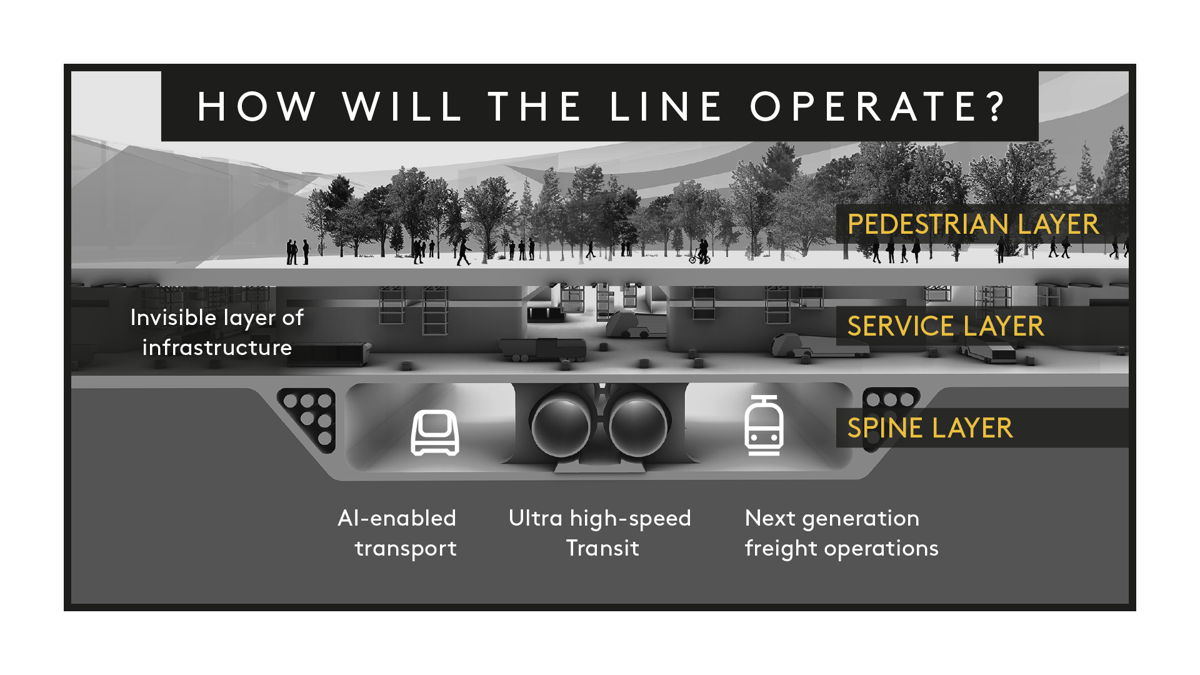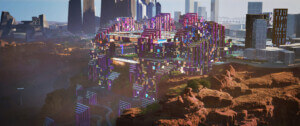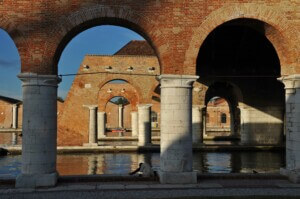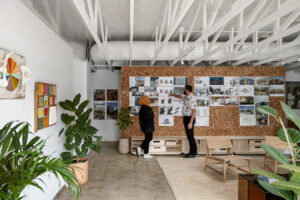Is it an innovative linear smart city or another exercise in PR-chitecture from a kingdom that promised to light its urban centers with an artificial moon? Saudi Arabia unveiled THE LINE on January 10 in a flashy keynote headed by Crown Prince Mohammed bin Salman, a 106-mile-long (170 kilometer) city devoid of cars that will (allegedly) cut across the 10,000-square-mile city-state of NEOM.
As a refresher, NEOM was first announced in 2017 as a “free zone” along the Red Sea, a futuristic $500-billion, clean-energy powered “living laboratory” backed by big-name investors and design names. Then, in 2018 after the killing of Washington Post journalist Jamal Khashoggi by the Saudi government, Sir Norman Foster, Carlo Ratti, and a host of others jumped ship from the project’s advisory board. There hasn’t been much news since, apart from controversy over the kingdom’s attempts to evict up to 20,000 native Bedouin tribe members from the site.
“Why should we sacrifice nature for the sake of development? Why should seven million people die every year because of pollution […] one million people every year due to traffic accidents?” HRH the Crown Prince questions as he introduces @NEOM’s THE LINE. #whatisTHELINE pic.twitter.com/9GJfsflr67
— CIC Saudi Arabia (@CICSaudi) January 10, 2021
That all changed earlier this week when bin Salman unveiled THE LINE in a TED Talk-styled speech showing off a speculative linear city slated to supposedly break ground in the first quarter of this year.
THE LINE, according to the reveal video, will stretch from the Red Sea to the mountains of northwest Saudi Arabia and condense urban centers into a band to preserve “95 percent” of NEOM’s natural wilderness. The Crown Prince also touted a host of futuristic benefits, saying that THE LINE had been designed around walkability first and foremost and that cars and roads would be wholly banned, with transportation needs met by an underground train system. An end-to-end trip will reportedly only take 20 minutes.
You might be asking if a “walkable city” arranged in a straight line is an oxymoron, but from the launch video, it looks like THE LINE will actually be made up of clusters of aggregated urban areas arranged around a central “spine” rather than a single large strip with functions distributed across it. NEOM’s developers have promised that everything will be accessible in a “5-minute walk,” and bin Salman touted that the entire development will be net-zero, powered by entirely renewable energy, and pollution-free.

Construction of THE LINE will cost an estimated $100-to-$200 billion (taken from the $500 billion appropriated to NEOM from the Saudi government and international investors) and the city is expected to house one million residents by 2030.
Of course, the announcement was instantly ridiculed online.
“Put four of these together and you have yourself a lifesize monopoly board,” tweeted one user. Others jumped in to call it dystopian, while some compared it to the 2012 third-person shooter Spec Ops: The Line.
— Erin dude gotta go Ryan (@morninggloria) January 12, 2021
Questions over who master planned THE LINE or made the promotional videos remain, and no firm has taken credit yet. While some questioned whether architecture studios wouldn’t publicly want to associate themselves with the Saudi government, Bjarke Ingels Group, Arquitectonica, Morphosis, and plenty of other internationally-known companies are still at work on the similar Qiddiya “giga-project” 28 miles outside of Riyadh, the Saudi capital.











